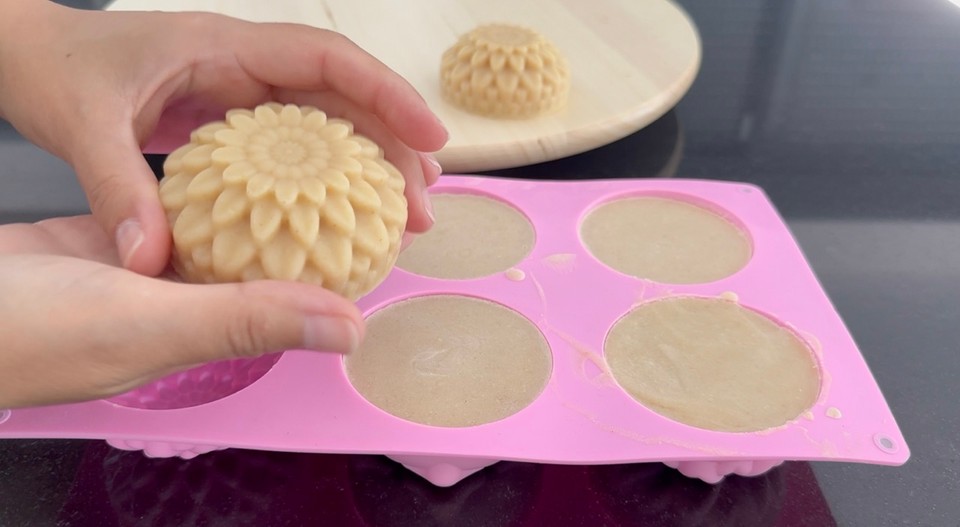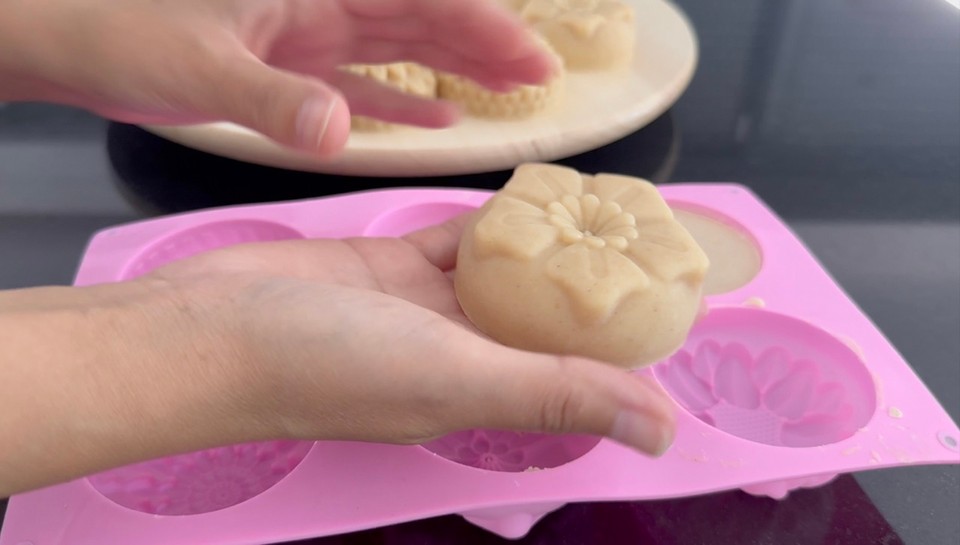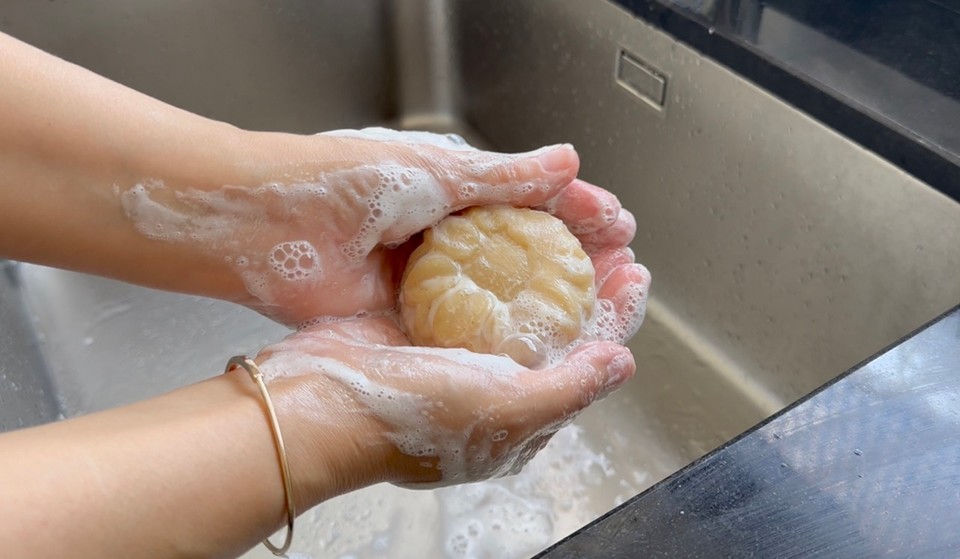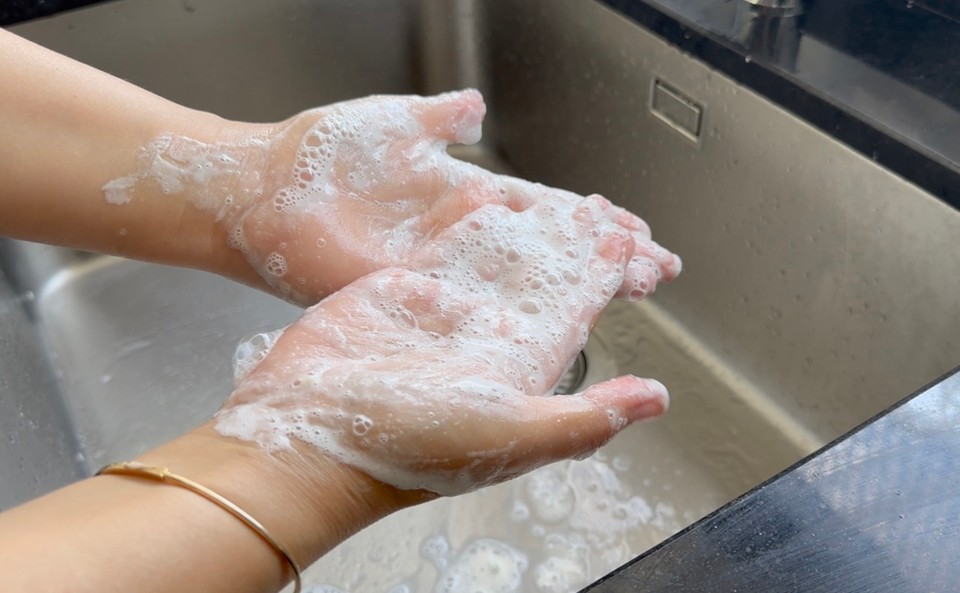Oats Body And Face Soap
This recipe is for oats soap. If you have never made soap before, please read this post about soap for beginners.
In this recipe, I blend some oat powder into the oils for a smooth texture. Oats are a fun additive to soap. They have a gentle exfoliating effect on the skin, anti-inflammatory and soothing properties.
Oat is considered a gentle and natural ingredient, making oat-based soaps suitable for sensitive skin.
You can make this soap unscented. For very sensitive skin, it is recommended to use unscented cosmetics products. In soap recipes if you choose to make an unscented soap, skip the essential or fragrance oils. No need to adjust the recipe or change the other amounts.
You can purchase colloidal oats, a very fine powder, almost silky and soft. I usually grind my oats in a coffee grinder. Grinding the oats in a coffee grinder gives me fine powder that is very similar to colloidal oats.
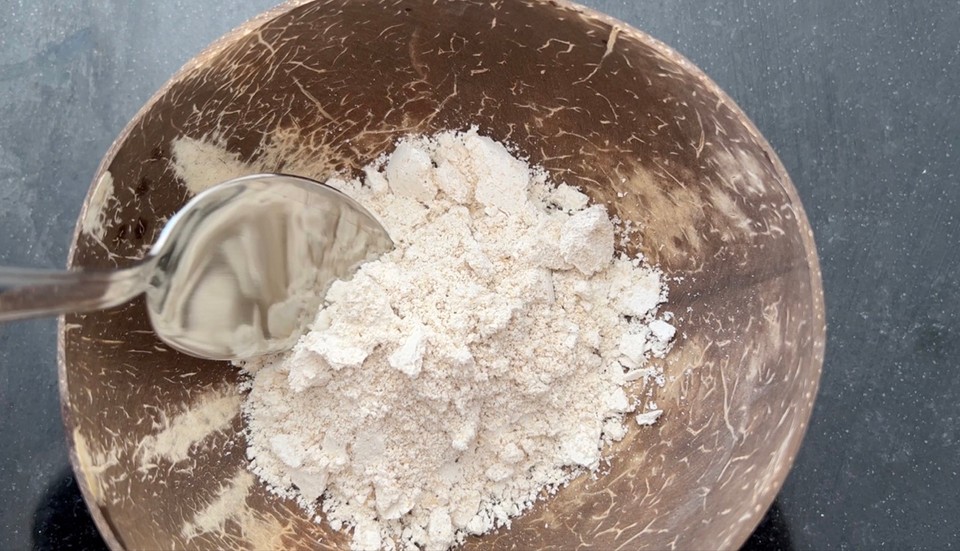
You can grind the oats in a food processor or a blender if you don't have colloidal oats or a coffee grinder. Make sure to grind them several times to achieve a fine powder.
Usually, in soap, you will see added ingredients such as clays, milk powders or starches (such as cornstarch or arrowroot powder). These ingredients add a silkiness texture to the soap.
You can add 1/2 tbsp of white kaolin clay or cornstarch to this recipe. If you choose to add clay or starch, add them to the oils and blend to combine.
I added nothing other than the oat mill to this soap batch.
If you made soaps before, you have noticed that many soapers add sodium lactate. Sodium lactate helps increase the hardness of soap, making it easier to release from the mold. Sodium lactate is a humectant, which means it draws and retains moisture in the skin. It can help the soap feel more moisturizing. The recommended usage rate is typically between 1% to 3% of the total oil weight in the soap recipe. If you wish to add sodium lactate to your soap, add it to the cooled-down lye solution and mix well to incorporate it with the lye solution. I would add 5g of sodium lactate to recipe 1 (460g of oils, which makes 6-7 small soap bars).
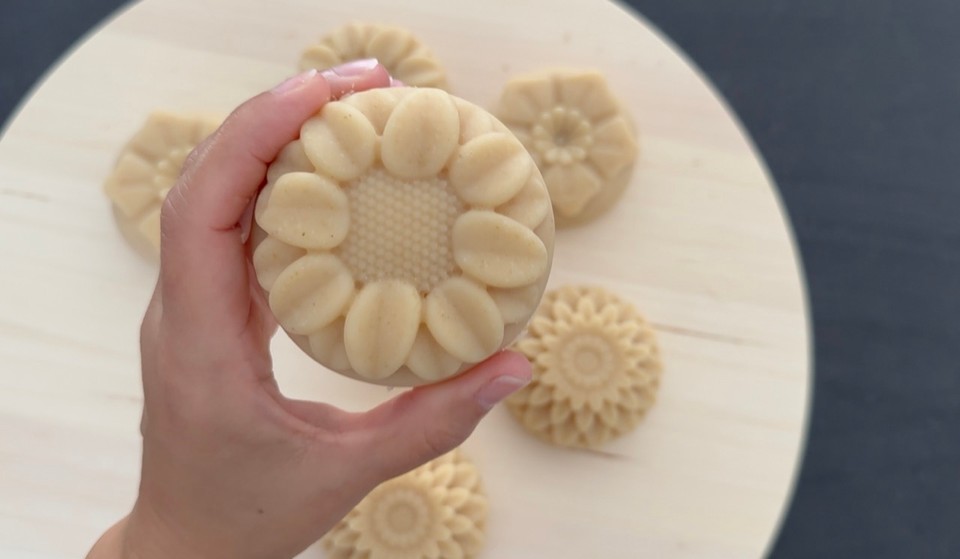
Solid soaps are my go-to products to make. Once you make soap, you will notice the difference between using a solid soap bar to a liquid shower gel. Making oat soap is easy, and you don't have to worry too much when it is the right moment to pour the soap. You can pour the soap into molds once you blend the lye with the oils and reach a light to medium trace.
If you like solid soaps, try these salt soap bars for more exfoliating, and this dish soap recipe It's one of my favorite and most useful recipes.
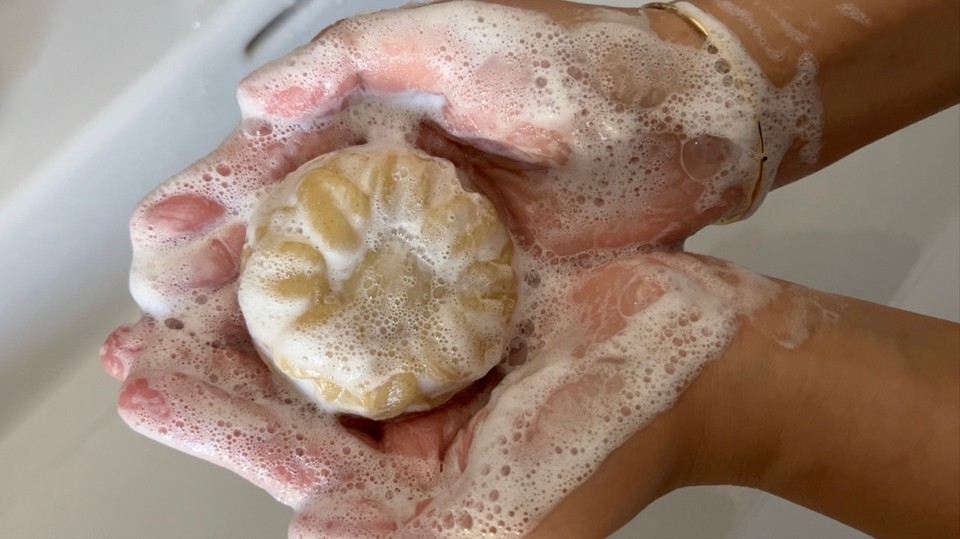
This recipe of oats soap is for an uncolored soap. The final color of the soap will be beige/eggshell. The color will be determined by the oils you are using. The more dark the oils, the darker the soap will be. If you prefer light white color, use light olive oil, which has a lighter color.
Since I'm from Spain, and we get excellent quality olive oil here (extra virgin olive oil), our olive oil usually will have a very dark olive green color, resulting in a much darker soap.
Also, you can use high oleic sunflower oil (which has a deep yellow-brown color) or regular sunflower oil (light yellow color). High oleic sunflower oil and regular sunflower oil have different fatty acid compositions (high oleic sunflower oil typically contains around 80% or more of oleic acid).
Due to its high oleic acid content, High oleic sunflower oil is known for its high stability and resistance to oxidation. (which contributes to a longer shelf life than regular sunflower oil).
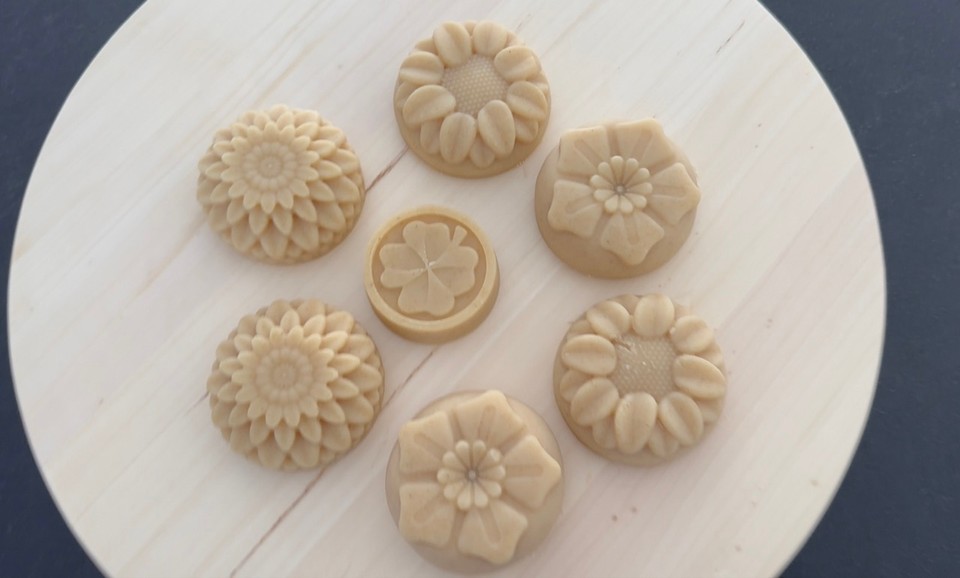
Other natural ways to color the soap includes: clays (green, red, purple or yellow clay) or infused oils (for example, alkanet-infused oil, annatto seeds-infused oil, turmeric-infused oil). I did not use any ingredients to color this soap since I like the beige color, which reminds me of the oats' color. To read more about oil infusions, please check this post here.
If you choose to scent the soap with essential oils, you can use lavender, geranium, ylang-ylang or sandalwood essential oils.
You can combine two essential oils or use just one. In this recipe, I didn't add essential oils to these bars since I want them suitable for sensitive skin and children.
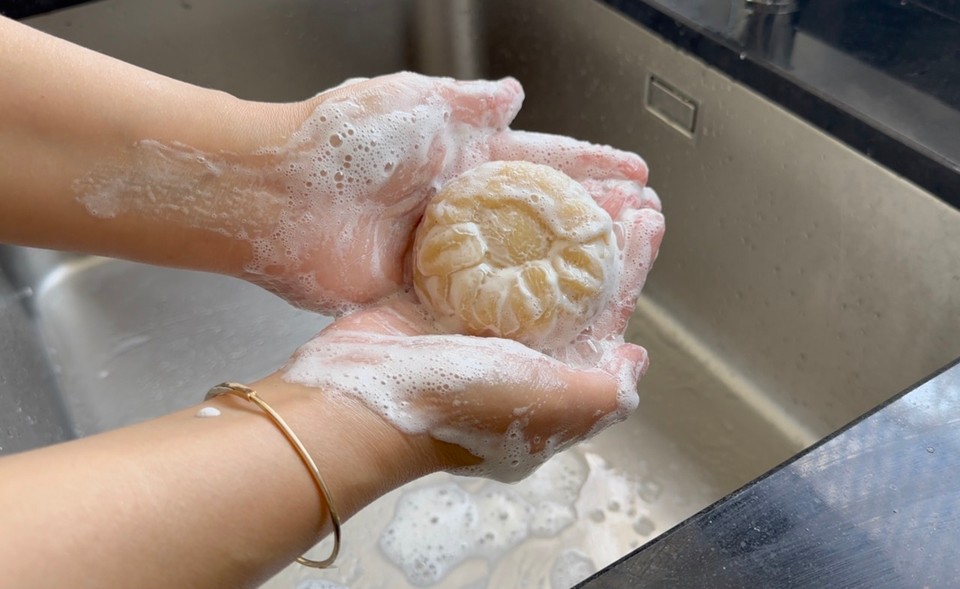
If you want to give some bars of soap to someone with sensitive skin, you can divide the soap batter and use half the essential oil amount in one part of the batter (this part will be for users with regular skin) . The other part of the soap batter will be unscented (for people with sensitive skin) , and I recommend pouring the unscented batter into a different mold so you will remember that this batch is unscented. Once you unmold the soaps, it is recommended to wrap them and write down on the wrapping which ones are scented and which ones are unscented.
In this post, I wrote three recipes. Each recipe is for a different amount. The first recipe is the amount I made in the video, which is for a few round bars. The second recipe is for 1000 g of oils which will fit a long rectangle mold and give you 8-10 bars of soap (in case you want to make a larger amount). And the third recipe is for a very small amount, giving you 2 bars of soap. You can choose which recipe is suited to your needs and make the amount you need.
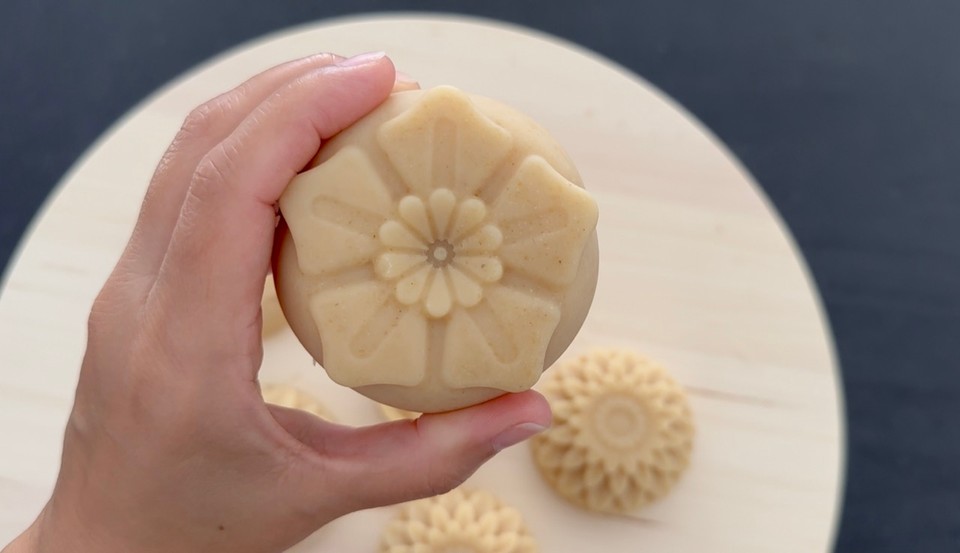
In this recipe, the super fat is 5% ("Superfatting '' in soap making refers to deliberately adding more fats or oils than required for complete saponification with lye. This results in unreacted fats that stay in the soap, providing additional moisturizing and nourishing benefits, making the soap gentler on the skin and leaving it feeling soft and conditioned). My go-to super fat is 5%. I prefer to add at most 5% since higher super-fat can reduce the soap's ability to lather well, and soaps with a high super-fat content can have a shorter shelf life than those with a lower super-fat percentage. The excess oils can lead to rancidity faster than soaps with less excess oils.
The lye concentration in this recipe is 33% (the amount of lye used in relation to the amount of oils in the soap recipe).
As always when making soap, you must use eyes and skin protection . Lye (sodium hydroxide) is a caustic substance; It is recommended to work in a well-ventilated area. Use only heat-resistant, non-aluminium containers, and always add the lye to the water (never the other way around). Keep children and pets away from your soapmaking workspace.
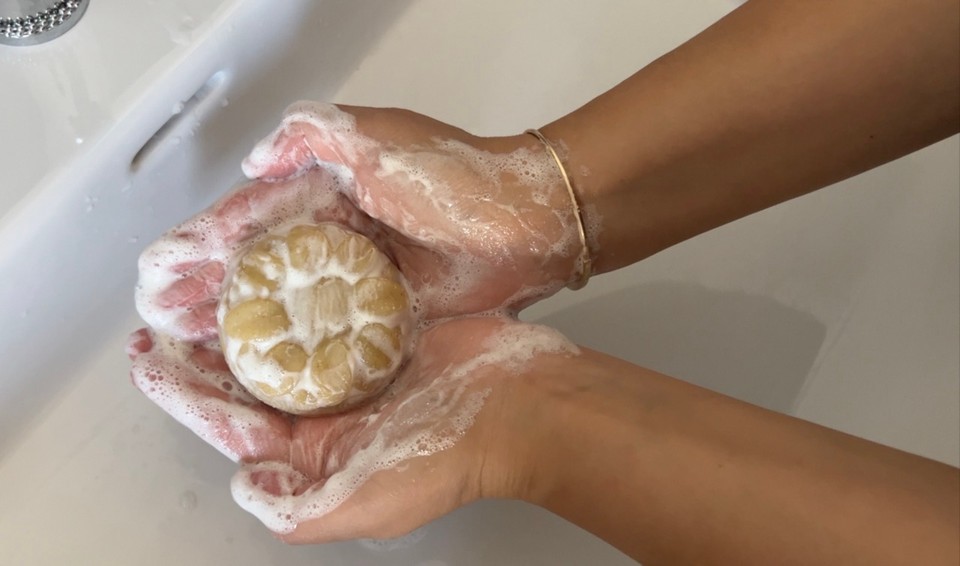
Soaps are a fantastic product you can make for yourself and your family, so remember to be safe while making the soap. Once the soap is cured (after 3-4 weeks from the day you made it), there's no lye present in the soap, and it is perfectly safe to use.
Enjoy your soaps!
Oat soap recipe 1 (460g oils) makes 6-7 small soap bars
- Distilled water 128g
- Lye (sodium hydroxide) 63g
- Coconut oil 92g
- Cocoa butter 92g
- Olive oil 138g
- Sunflower oil 115g
- Castor oil 23g
- 3-5 tbsp fine powder oats
*** Optional essential oil 14g
Oat soap recipe 2 (1000g oils) makes 9-11 soap bars
- Distilled water 280g
- Lye (sodium hydroxide) 138g
- Coconut oil 200g
- Cocoa butter 200g
- Olive oil 300g
- Sunflower oil 250g
- Castor oil 50g
- 7-9 tbsp fine powder oats
*** Optional essential oil 30g
Oat soap recipe 3 (240g oils) makes 2 small soap bars
- Distilled water 67g
- Lye (sodium hydroxide) 33g
- Coconut oil 48g
- Cocoa butter 48g
- Olive oil 72g
- Sunflower oil 60g
- Castor oil 12g
- 1-2 tbsp fine powder oats
*** Optional essential oil 6-7g
Method:
- Make oat powder by grinding oats in a coffee or food processor. Set aside.

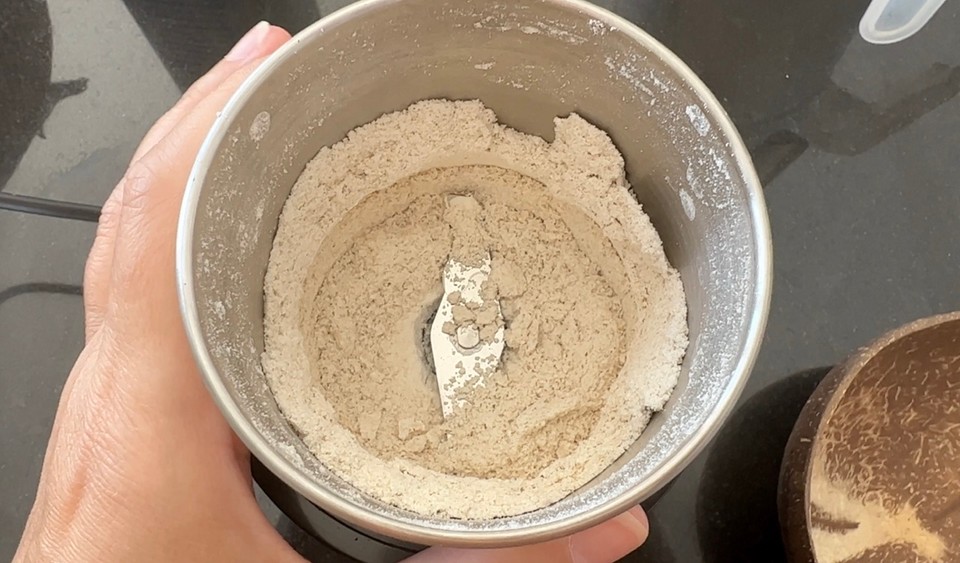
- In a heat-resistant container add the water (don’t forget to protect your hands and eyes before starting making the lye solution). Add the lye (sodium hydroxide) to the water (it will get hot very quickly), Stir the lye to dissolve in the water until the water will be clear. It is recommended to add the lye to the water in a ventilated area (close to a window). Set aside to cool down.
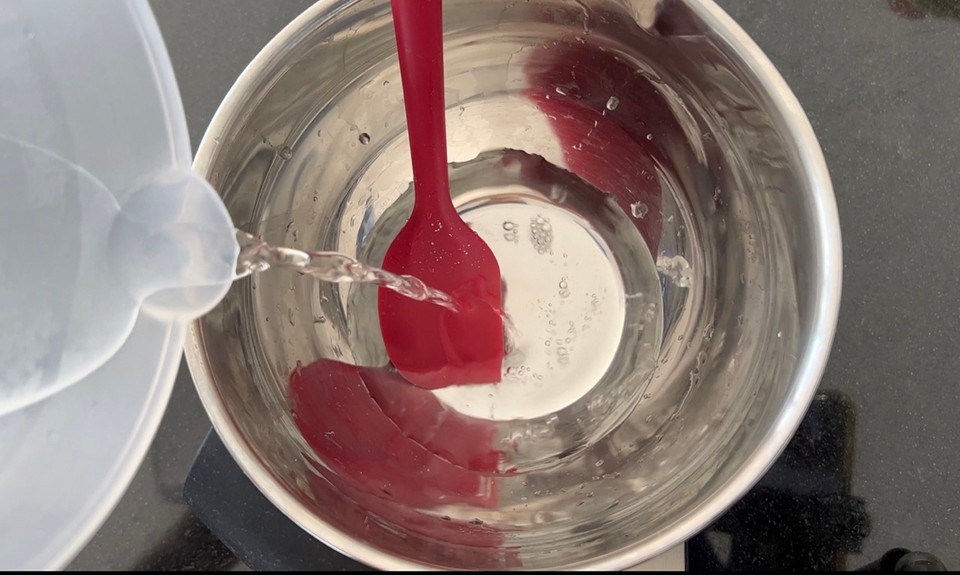
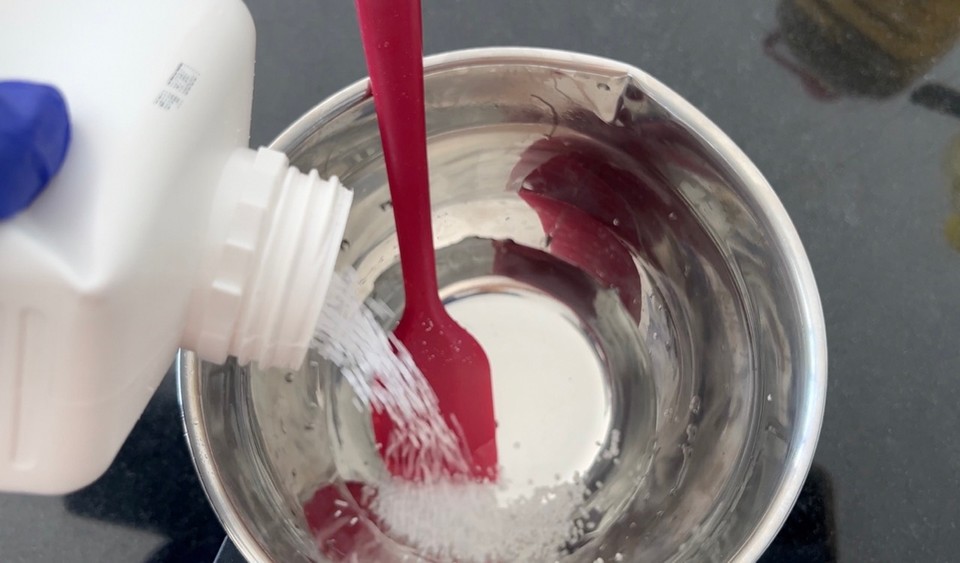

- In a pan place the hard oils (such as coconut oil) and butters (cocoa butter) and melt them on low-medium heat.
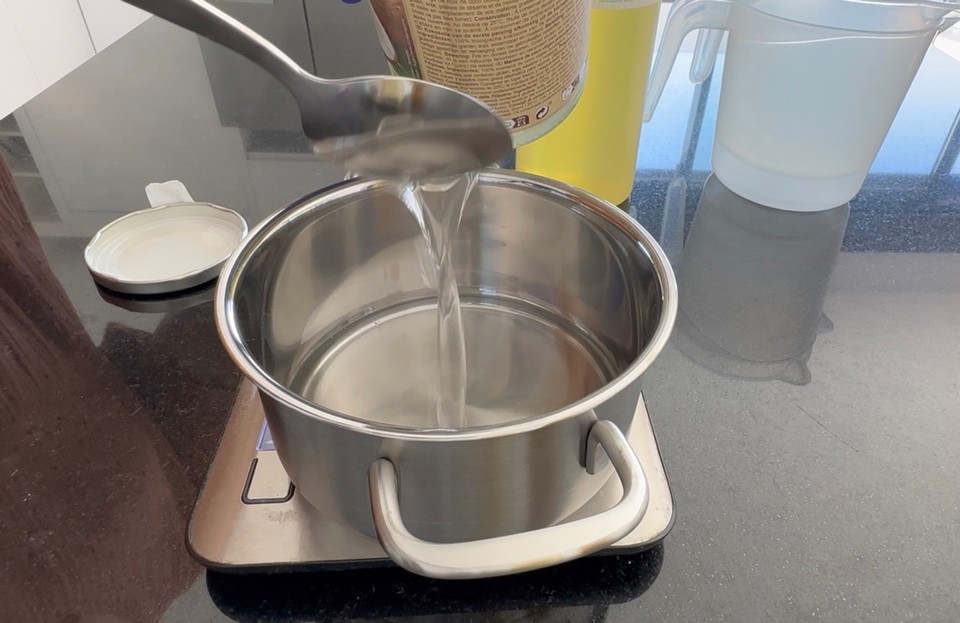
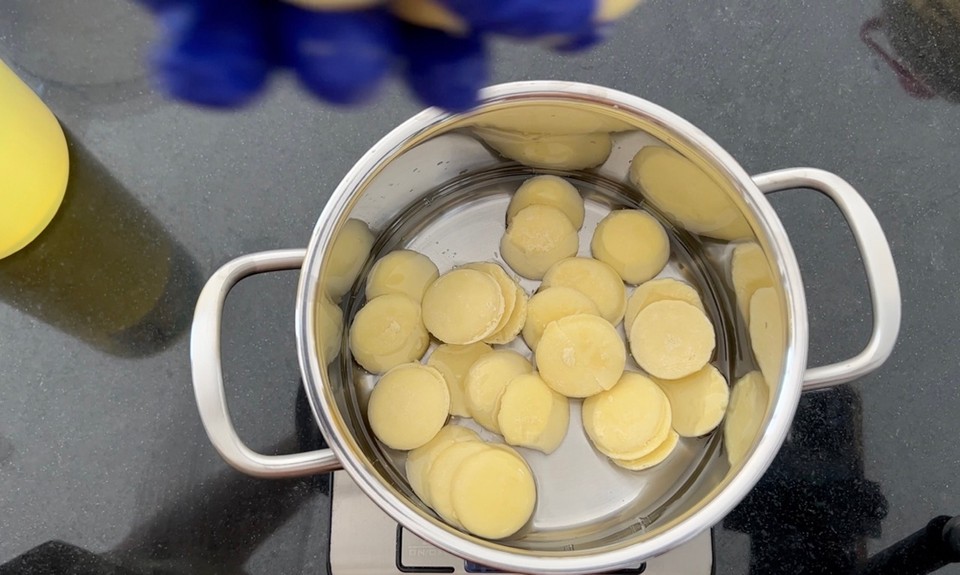
- In a different container add the liquid oils (olive oil). Take into consideration that coconut oil can be liquid in warm temperatures, so if it’s liquid you can add it here, if you live in a cold area your coconut oil is probably solid and you will need to melt it with the butter.
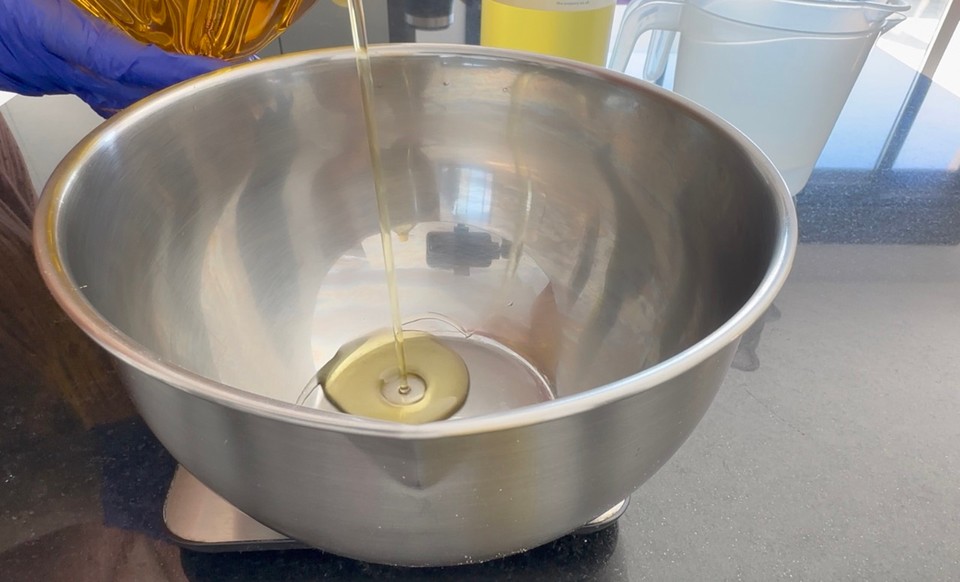
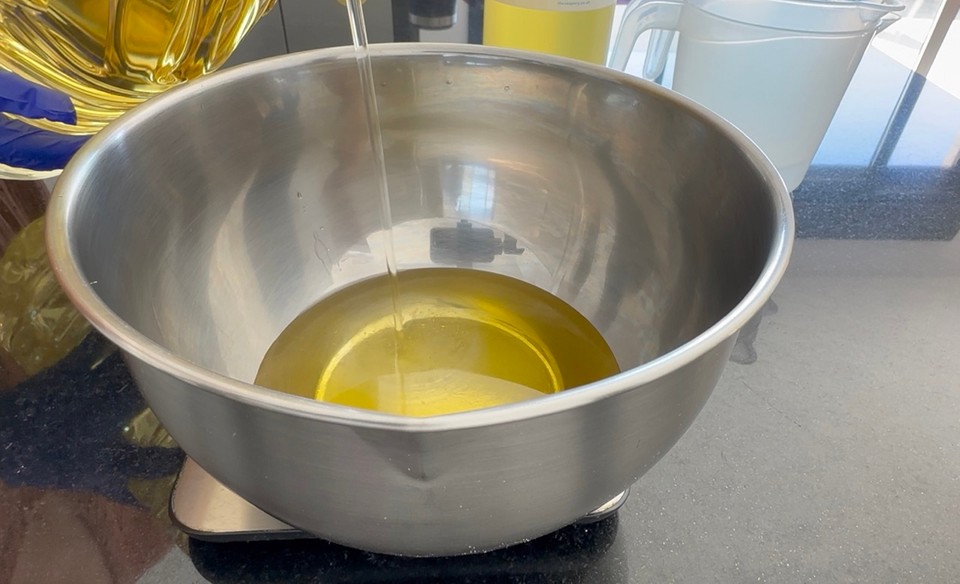
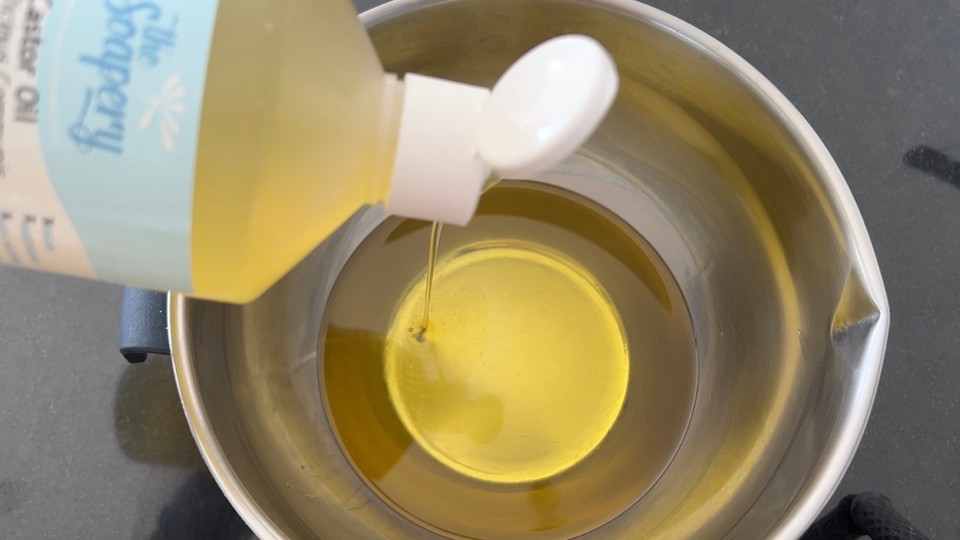
- Add the melted butters and oils to the liquid oils and mix to combine.
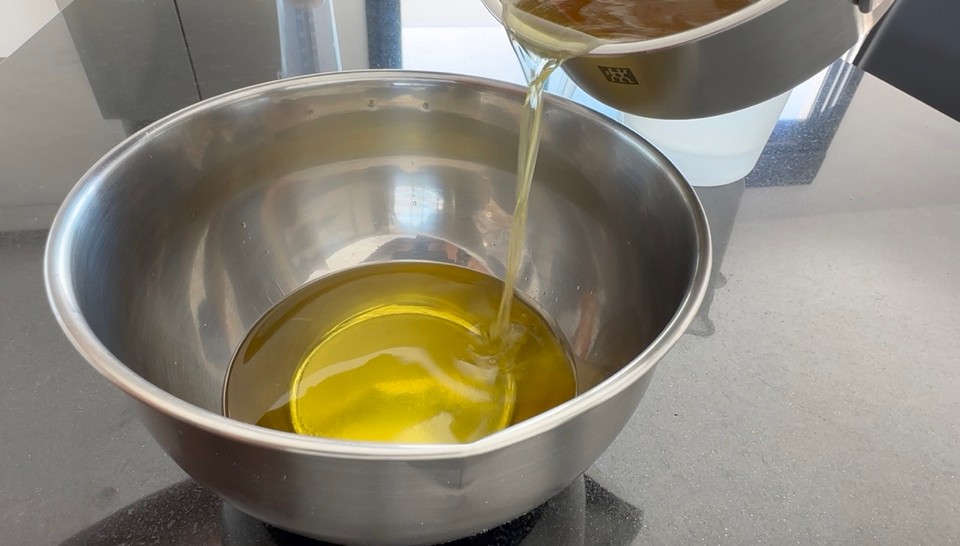
- Add the oat powder and mix with an immersion blender.
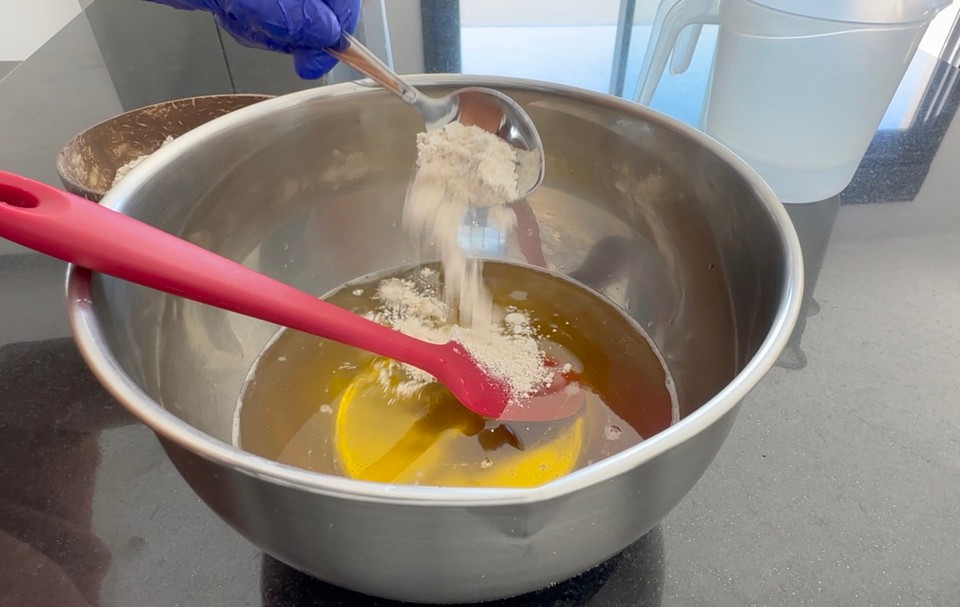
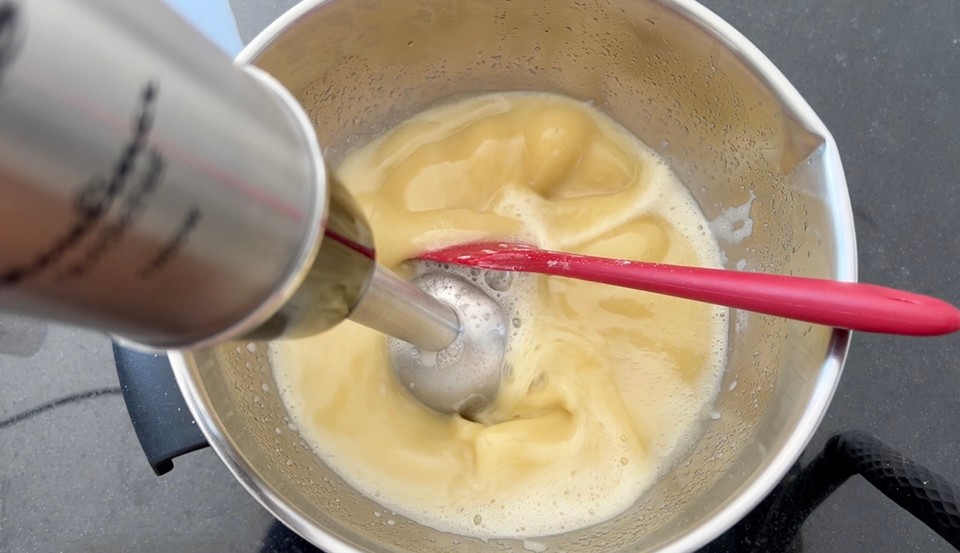
- Check the lye solution temperature and the oil's temperature. I recommend mixing the lye into the oils at a temperature of 35-45 degrees celsius (120 fahrenheit), the lye solution and the oils should be more or less at the same temperature.

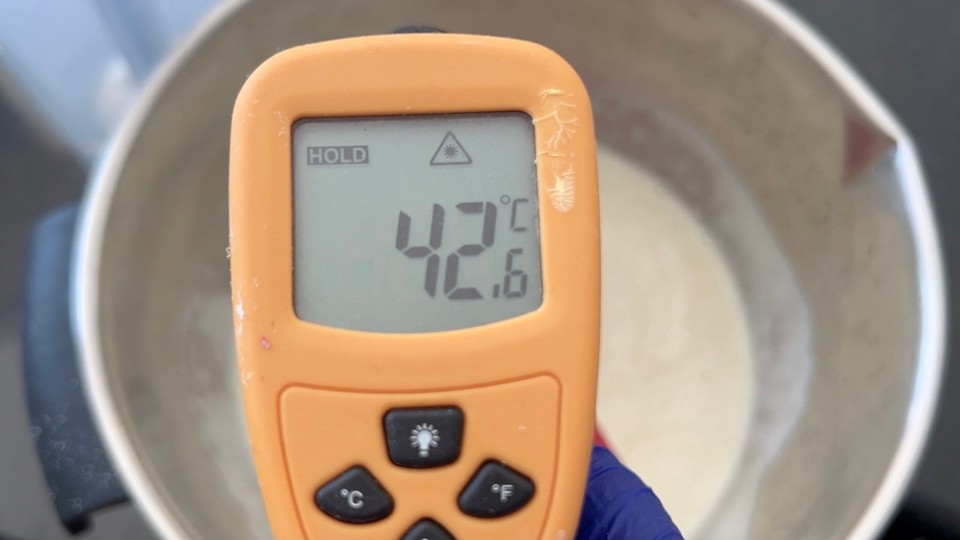
- Now add the lye solution to the oils (never the other way).
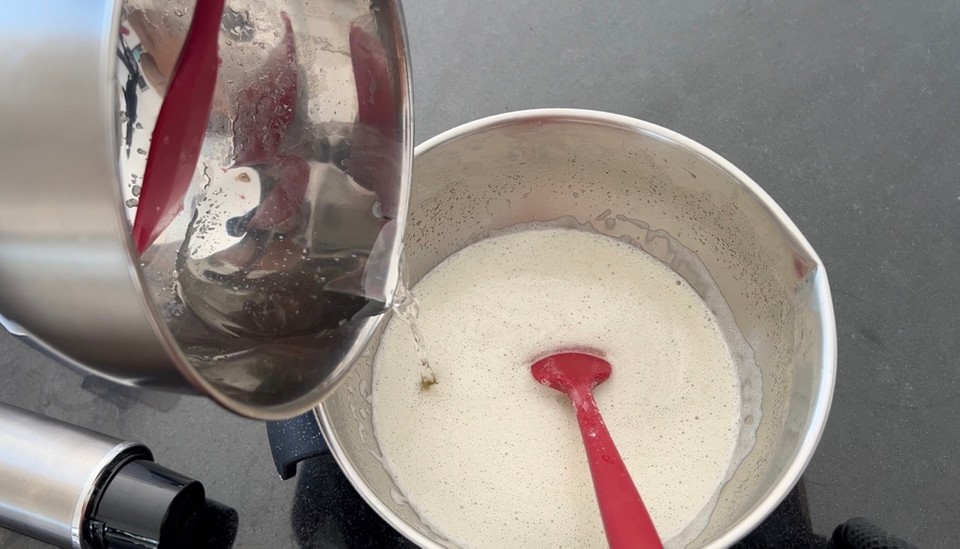
- Use an immersion blender to emulsify and reach a light/medium trace. If you want to add essential oil add it now and mix with a spatula to incorporate.
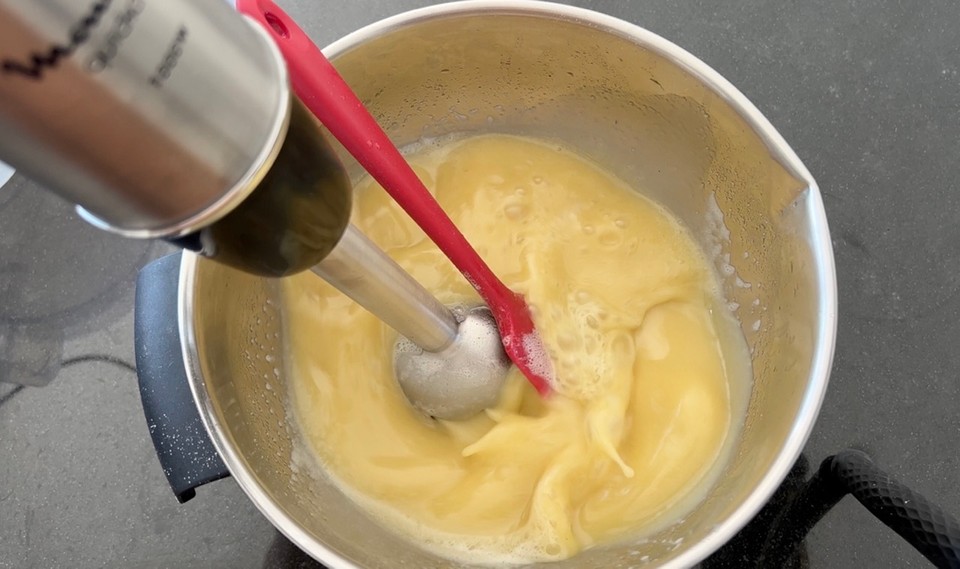
- Pour into molds. Let the soap solidify for 24-48 hours.
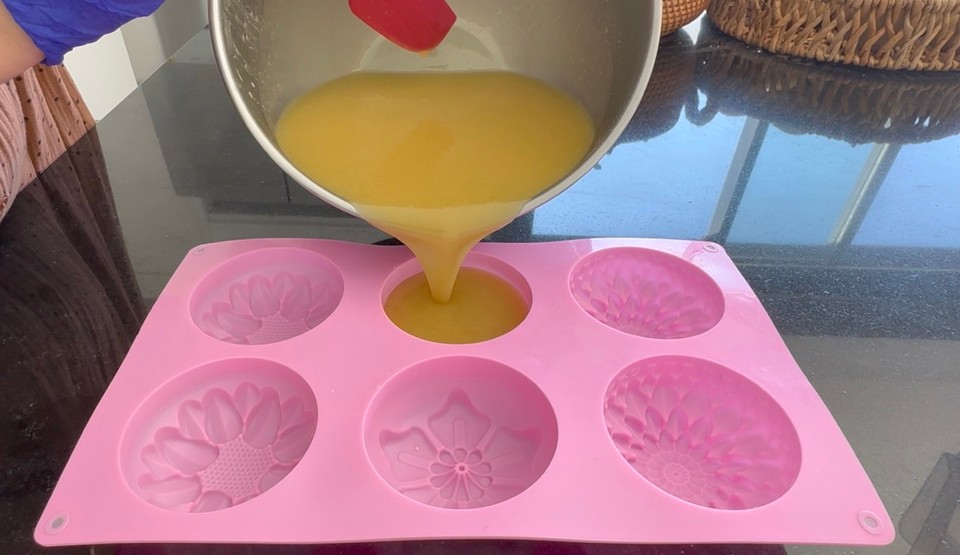
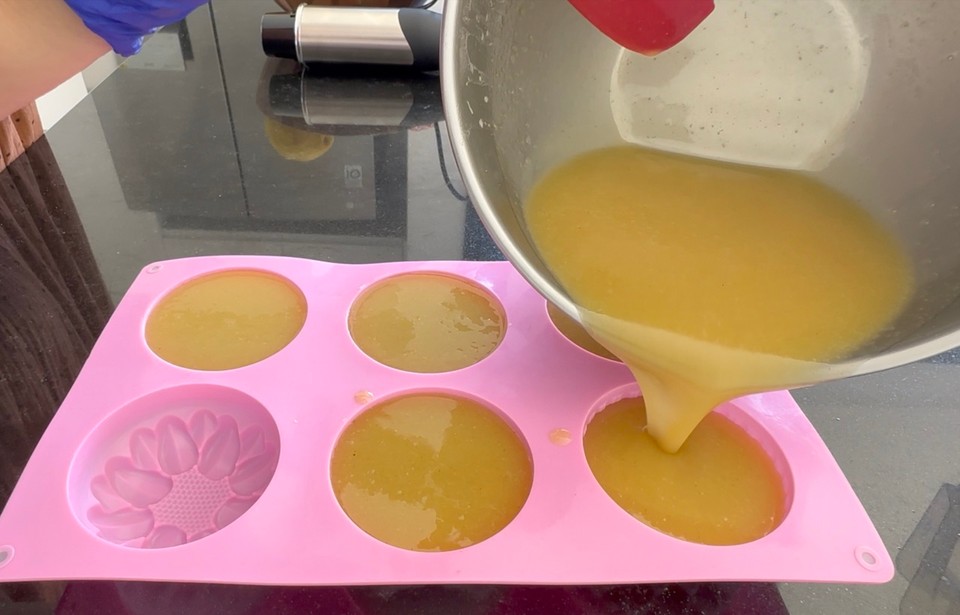
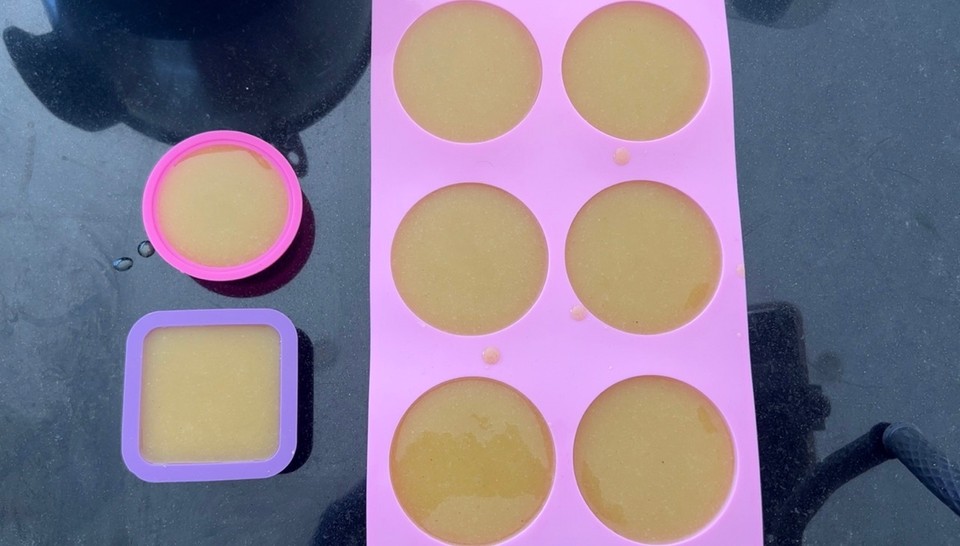
- After 24-48 hours unmold the soap bars and leave them to cure for 3-4 weeks. After 3-4 weeks the soaps are ready to be used.
